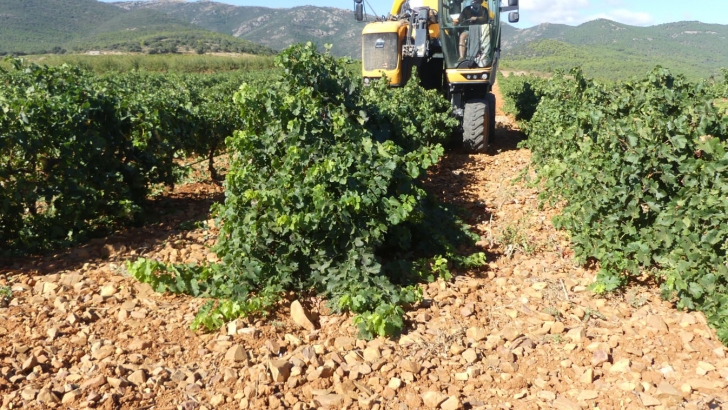
Drought and heat waves hit the European harvest that presents very different results by countries
COPA – COGECA forecasts that the three main producing countries, Italy, France and Spain, produce 130.2 million hectolitres, which represents a slight increase (+1.1%) over the 128.7 million hectolitres produced in 2021/22 and a slight decrease (-2.1%) for the five-year average of 132.9 million hectolitres.
The recent report of the European Agricultural Associations and Cooperatives (COPA – COGECA) predicts that EU wine production will remain more or less stable compared to the previous year, but not reaching the average of the last five years (2017-2021)There are significant disparities within countries as a result of droughts and high temperatures during the spring and summer months.
The three main producing countries, Italy, France and Spain, are expected to produce 130.2 million hectolitres, which represents a slight increase (+1.1%) over the 128.7 million hectolitres produced in 2021/22 and a slight decrease (-2.1%) For the five-year average of 132.9 million hectolitres. In most other producing countries there are decreases in yields.
Overall, the 2022/23 harvest is characterized by the impact of drought and scorching temperatures throughout Europe, causing a precipitous harvest and reduced yields. The positive note is that the grapes are in very good phytosanitary condition, which augurs wines of excellent quality.
Commenting on the expected figures, Luca Rigotti, Chair of the Copa-Cogeca Wine Working Group, said “Although not abundant, the 2022 harvest has been “saved” largely thanks to the efforts of winegrowers. However, this year is still difficult for the whole sector: the increased cost of transport, glass, cardboard, plant protection products and energy has further aggravated the already high production costs. This is further eroding producers’ margins”.
For Luca Rigotti, the difficulties caused by droughts and high temperatures across Europe have shown that “producers are committed to mitigating the impact of climate change and preserving the environment. Winegrowers and cooperatives are innovating and applying good practices that respect the environment (pruning waste, efficient irrigation systems, reduction of phytosanitary treatments) without compromising the quality of our wines.”
Country situation
In Italy stable production is expected compared to the previous year, despite adverse weather events, namely drought and high temperatures. The lack of rainfall has facilitated the control of fungal diseases, thus reducing the number of phytosanitary interventions.
After a very low 2021 harvest decimated by spring frosts, wine production in France is expected to recover. Approximately 44 million hectolitres will be produced in 2022, an increase of 16.2 per cent over 2021. In many regions, the harvest started unusually early due to high temperatures. The spring frosts, followed by hail and heat waves, affected mainly the vineyards of the southwest and Charentes. The lack of rainfall and high summer temperatures reduced projected volumes in several regions, while drought reduced them in others.
The scorching temperatures and drought affected the vineyards of Spain, which suffered the lack of rain and water (the capacity of the reservoirs fell to 36.9% from 55.6% on average). As in Italy and France, the 2022 harvest has been advanced between two and three weeks due to the weather, which has contributed to the grapes being of good quality and free of diseases.
In Portugal, production is expected to reach 6.7 million hectolitres. The decrease of 9% compared to the previous season 2021/22 is due to water scarcity and high temperatures, which make it difficult to ripen grapes. The grapes have a good phytosanitary state, without registers of pests or diseases.
Winter and summer droughts, especially during vegetation development, have affected yields in Hungary. Rainfall at the end of summer and the beginning of autumn is expected to cause a drop in production of about 20 per cent.
In Austria, drought and heat are likely to cause a slight drop in production (-2.5%) from 2021/22 levels and the five-year average.
In Slovenia, wine production will fall by 14% compared to the previous 2021/22 marketing year, which was already low due to spring frosts, and by 30% compared to the five-year average. The main reason for this decline is the drought that affected all the wine regions of the country.
The good weather experienced in 2022 has led to fewer diseases, so wine production in the Netherlands is expected to increase by 10%.
Continued heavy rains in Greece are affecting the harvest, which is expected to be lower than originally planned. However, no figures are available because the situation continues to evolve. The harvest is still ongoing in Germany and Luxembourg. As the situation is very heterogeneous, performance data are not yet available.

